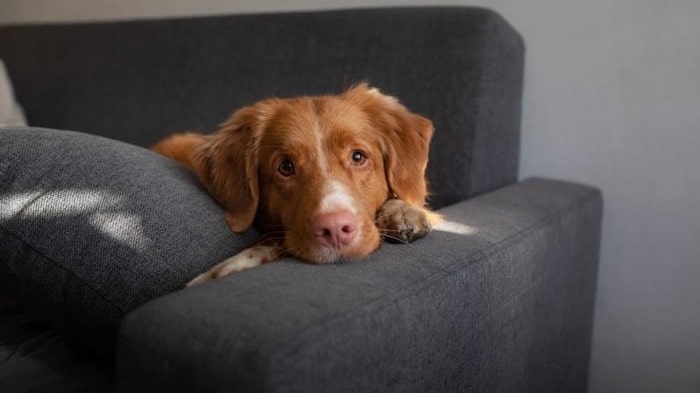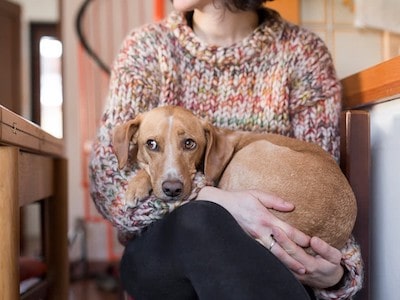Surgery is a stressful and traumatic experience for any dog. It involves anesthesia, incisions, stitches, pain, inflammation, and sometimes blood loss or organ removal. It also disrupts your dog’s normal routine, diet, activity level, and social interactions.
All these factors can cause your dog to shake after surgery. Shaking is a natural response of the body to cope with stress, pain, cold, or shock. Shaking can also be a side effect of anesthesia or medication, or a symptom of an underlying condition or complication.
Shaking in dogs after surgery can be classified into two main types: shivering and trembling. Shivering is the rapid contraction and relaxation of muscles to generate heat and maintain body temperature. Trembling is the involuntary movement of muscles due to nervousness, fear, excitement, or pain.
Both types of shaking are normal and usually subside within a few hours or days after surgery. However, if your dog’s shaking persists or worsens, it could indicate a serious or life-threatening problem that requires immediate veterinary attention.
In this article, we will discuss the common causes and types of shaking in dogs after surgery, how to help your dog stop shaking, when to call the vet. We will also help you recognize different types of shaking and how to deal with their complications or side effects.
Table of Contents
Causes of Shaking in Dogs After Surgery
There are many possible factors that can trigger shaking in dogs after surgery. Some of them are physiological, meaning they affect the body’s functions and systems. Some of them are psychological, meaning they affect the mind and emotions. And some of them are environmental, meaning they affect the surroundings and conditions.
Here are some of the most common causes of shaking in dogs after surgery:
- Anesthesia: Anesthesia is the use of drugs to induce unconsciousness and prevent pain during surgery. Anesthesia can have various effects on your dog’s body temperature, blood pressure, heart rate, breathing rate, and metabolism. Anesthesia can also cause nausea, vomiting, drowsiness, confusion, or hallucinations in some dogs. These effects can make your dog shake during or after surgery.
- Pain: Pain is the sensation of physical discomfort or distress caused by injury, illness, or inflammation. Pain can be acute (short-term) or chronic (long-term). Pain can also be localized (affecting a specific area) or generalized (affecting the whole body). Pain can make your dog shake because it stimulates the nervous system and releases stress hormones such as adrenaline and cortisol.

- Cold: Cold is the lack of heat or warmth in the body or environment. Cold can cause your dog to shake because it lowers their body temperature and reduces their blood circulation. Cold can also make your dog more susceptible to infections or complications after surgery.
- Shock: Shock is a life-threatening condition that occurs when the body’s organs and tissues do not receive enough oxygen and nutrients due to low blood pressure, blood loss, dehydration, infection, or trauma. Shock can cause your dog to shake because it affects their vital signs such as heart rate, breathing rate, blood pressure, and body temperature.
- Fear: Fear is an emotion that arises from the perception of danger or threat. Fear can make your dog shake because it activates the fight-or-flight response in their brain and body. Fear can also make your dog more anxious, nervous, or aggressive after surgery.
- Excitement: Excitement is an emotion that arises from the anticipation of something positive or pleasurable. Excitement can make your dog shake because it increases their heart rate, breathing rate, blood pressure, and energy level. Excitement can also make your dog more restless, hyperactive, or vocal after surgery.
These are some of the common causes of shaking in dogs after surgery. However, there could be other factors that are specific to your dog’s breed, age, health, personality, or surgery type. Therefore, it is important to monitor your dog’s shaking and report any changes or concerns to your vet.
How to Help Your Dog Stop Shaking After Surgery
Shaking is not always a sign of something serious, but it can be uncomfortable and distressing for your dog and for you. Therefore, you should try to help your dog stop shaking after surgery by providing them with comfort, warmth, and pain relief.
Here are some practical tips and advice on how to help your dog stop shaking after surgery:

- Comfort: Comfort is the feeling of being safe, secure, and relaxed. Comfort can help your dog stop shaking by reducing their stress, fear, and anxiety levels. You can provide comfort to your dog by staying with them, talking to them, petting them, or cuddling them. You can also give them a familiar toy or blanket, play soothing music, or use aromatherapy or pheromones to calm them down.
- Warmth: Warmth is the feeling of being hot or cozy. Warmth can help your dog stop shaking by increasing their body temperature and blood circulation. You can provide warmth to your dog by covering them with a blanket, applying a heat pad or a hot water bottle, adjusting the room temperature, or using a heating lamp or a fan.
- Pain relief: Pain relief is the reduction or elimination of pain. Pain relief can help your dog stop shaking by easing their physical discomfort and distress. You can provide pain relief to your dog by administering pain medication, anti-inflammatory drugs, or other supplements prescribed by your vet. You can also use natural remedies such as massage, acupuncture, or herbal teas to soothe their pain.
These are some of the ways you can help your dog stop shaking after surgery. However, you should always follow the post-operative instructions and care plan provided by your vet. You should also consult your vet before using any products or methods that are not recommended or approved by them.
How to Recognize Different Types of Shaking in Dogs After Surgery
Shaking in dogs after surgery can be classified into two main types: shivering and trembling. Shivering is the rapid contraction and relaxation of muscles to generate heat and maintain body temperature. Trembling is the involuntary movement of muscles due to nervousness, fear, excitement, or pain.
Both types of shaking are normal and usually subside within a few hours or days after surgery. However, sometimes they can indicate different causes or conditions that require different actions or treatments.

Here are some ways to recognize different types of shaking in dogs after surgery:
- Shivering: Shivering is more common in small, short-haired, or thin dogs that have difficulty regulating their body temperature after anesthesia or surgery. Shivering usually occurs when the dog is cold, wet, or exposed to drafts or fans. Shivering usually stops when the dog is warmed up, dried off, or covered with a blanket.
- Trembling: Trembling is more common in nervous, anxious, or sensitive dogs that have difficulty coping with stress, pain, or shock after anesthesia or surgery. Trembling usually occurs when the dog is scared, confused, or excited. Trembling usually stops when the dog is comforted, calmed down, or given pain relief.
These are some of the ways to recognize different types of shaking in dogs after surgery. However, there could be other factors that affect your dog’s shaking patterns, frequency, intensity, and duration. Therefore, it is important to observe and record your dog’s shaking behavior closely and report any changes or concerns to your vet.
How to Deal with Complications or Side Effects of Shaking in Dogs After Surgery
Shaking is usually a harmless and temporary reaction in dogs after surgery. However, sometimes shaking can lead to complications or side effects that can worsen your dog’s condition or prolong their healing process.
Here are some of the possible complications or side effects of shaking in dogs after surgery and how to deal with them:
- Muscle soreness: Muscle soreness is the pain or stiffness of the muscles due to overuse, injury, or inflammation. Muscle soreness can result from prolonged or severe shaking in dogs after surgery. Muscle soreness can make your dog more uncomfortable and reluctant to move or exercise after surgery.
You can deal with muscle soreness by applying a cold or warm compress, giving your dog a gentle massage, or using a muscle relaxant or anti-inflammatory drug prescribed by your vet.

- Dehydration: Dehydration is the loss of water and electrolytes from the body due to excessive sweating, vomiting, diarrhea, or blood loss. Dehydration can result from prolonged or severe shaking in dogs after surgery.
Dehydration can make your dog more weak, lethargic, or dizzy after surgery. You can deal with dehydration by offering your dog fluids such as water, broth, or electrolyte solution. You can also use a syringe or a dropper to administer fluids orally if your dog is not drinking voluntarily.
- Hypothermia: Hypothermia is the abnormally low body temperature due to exposure to cold or loss of heat. Hypothermia can result from prolonged or severe shaking in dogs after surgery. Hypothermia can make your dog more sluggish, shallow, or unresponsive after surgery.
You can deal with hypothermia by warming up your dog with a heat pad, a hot water bottle, a heating lamp, or a fan. You can also monitor your dog’s body temperature with a thermometer and contact your vet if it drops below 99°F (37°C).
These are some of the complications or side effects that can result from shaking in dogs after surgery and how to deal with them. However, there could be other complications or side effects that are specific to your dog’s breed, age, health, personality, or surgery type. Therefore, it is important to monitor your dog’s shaking and health closely and contact your vet if you notice any signs of trouble.
FAQs
How long will my dog continue to shake after surgery?
The duration of post-surgery shaking can vary depending on the individual dog and the extent of the procedure. In most cases, it should resolve within 24 to 48 hours after surgery. If the shaking persists beyond this period or worsens, contact your veterinarian immediately.
Should I be concerned about my dog’s shaking after surgery?
In many cases, mild shaking or trembling after surgery is considered normal as long as it gradually subsides. However, if your dog is experiencing severe or prolonged shaking, exhibits other concerning symptoms, or seems to be in distress, consult your veterinarian promptly.
Is it normal for my dog to have a reduced appetite after surgery?
Yes, a decreased appetite is a typical response to surgery in dogs. The anesthesia and stress can affect their appetite temporarily. However, monitor their food and water intake closely. If they don’t eat or drink for an extended period, consult your vet.
Should I limit my dog’s movement during the shaking phase?
Yes, it’s generally recommended to limit your dog’s activity during the initial recovery period after surgery. Restricted movement helps prevent potential complications and allows the incision site to heal properly. Follow your vet’s post-surgery care instructions regarding exercise and movement.
Conclusion
In conclusion, post-surgery shaking in dogs is a common and often normal response to the anesthesia wearing off, pain, and stress from the procedure. While it usually resolves within 24 to 48 hours, it’s essential to monitor your dog closely and provide them with a calm and comfortable environment.
If the shaking persists or worsens, or if you notice any concerning symptoms, consult your veterinarian promptly. Remember to follow their post-surgery care instructions carefully to ensure a smooth and successful recovery for your furry companion.


